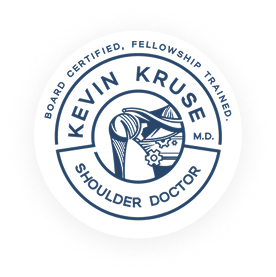Subacromial decompression surgery is a common procedure to relieve shoulder pain caused by impingement syndrome. This outpatient surgery is often recommended for patients whose pain and limited mobility haven’t improved with nonsurgical treatments. Knowing what to expect can help you feel more at ease and prepared for your surgery day.
This guide provides a walkthrough of the surgical process, including anesthesia, incision methods, and the immediate postoperative recovery experience.
Understanding Subacromial Decompression Surgery
Subacromial decompression surgery aims to create more space in the shoulder’s subacromial area by removing or reshaping structures that might be causing impingement. Typically, this involves trimming bone spurs from the acromion (part of the shoulder blade) or removing parts of the bursa—a fluid-filled sac that can become inflamed. By doing so, the pressure on the rotator cuff tendons is relieved, reducing pain and improving mobility.
There are two primary techniques used for this procedure: arthroscopic (minimally invasive) and open surgery. Most patients today undergo arthroscopic decompression due to its less invasive nature, shorter recovery times, and reduced scarring.
Operative protocols vary by surgeon and the information this article may not apply to all patients or situations
Step-by-Step Overview of the Surgery
- Anesthesia and Preoperative Preparation
Anesthesia Options
Subacromial decompression is typically performed under general anesthesia, which keeps you asleep and pain-free throughout the surgery. In some cases, a regional block (an injection to numb the shoulder and arm area) may be administered along with sedation to minimize discomfort.
What to Expect:
- Preoperative Consultation: Before surgery, you’ll meet with an anesthesiologist to discuss your medical history and determine the safest anesthesia option for you. If you’re concerned about anesthesia, this is an excellent time to ask questions.
- Medication Administration: The anesthesia will be administered through an IV line. After this point, you will quickly drift off to sleep and won’t feel or remember anything during the procedure.
- Positioning and Preparation for Incisions
Once anesthesia takes effect, the surgical team will position your shoulder for optimal access. Typically, the arm will be carefully positioned away from your body to allow the surgeon a clear view and easy access to the subacromial space.
The shoulder area will be cleaned with antiseptic solutions, and sterile drapes will be placed to maintain a clean, infection-free environment.
- Incision Methods
The type of incision depends on whether the surgeon performs arthroscopic or open surgery:
Arthroscopic Technique
- Procedure: The surgeon makes two or three small incisions (about the size of a buttonhole) around the shoulder. Through one incision, an arthroscope—a small tube with a camera—is inserted, allowing the surgeon to view the shoulder’s interior on a monitor. Other incisions are used to insert surgical instruments for trimming bone spurs, removing inflamed tissue, or reshaping the acromion.
- Advantages: This technique results in minimal scarring, less tissue disruption, and a faster recovery.
What Happens During the Surgery Itself
- Insertion of the Arthroscope (Arthroscopic Only): After making small incisions, the surgeon inserts the arthroscope and examines the structures within the shoulder, including the rotator cuff tendons, the bursa, and the acromion.
- Assessment and Removal of Damaged Tissue: Any inflamed or damaged tissue that could be contributing to impingement, such as parts of the bursa or scar tissue, may be removed.
- Acromioplasty (Bone Shaving): In most cases, the surgeon will perform an acromioplasty, which involves shaving or reshaping the acromion bone to prevent it from rubbing against the rotator cuff tendons. The reshaping process is carefully monitored on a screen using the arthroscope.
- Final Inspection and Closure: Once the decompression is complete, the surgeon examines the area to ensure no additional trimming or adjustments are needed. The surgical instruments are then removed, and the incisions are closed, typically with stitches or small surgical strips.
Postoperative Recovery Room Expectations
Once the surgery is complete, you’ll be moved to the recovery room, where the healthcare team will monitor you as you wake up from anesthesia. Here’s what to expect:
- Waking Up from Anesthesia
- Most patients wake up feeling drowsy or slightly disoriented. It’s normal to experience some confusion, grogginess, or chills as the anesthesia wears off.
- Nurses will monitor your vital signs, including heart rate, blood pressure, and oxygen levels, to ensure that you are waking up safely and without complications.
- Managing Immediate Pain and Discomfort
- Pain Management: You may feel some shoulder discomfort as the anesthesia wears off. Pain medications may be given through an IV or orally to keep you comfortable.
- Cold Therapy: To minimize swelling, the healthcare team may apply an ice pack or cold therapy device to the shoulder area. Ice can be helpful in controlling pain and preventing inflammation.
- Observing for Any Postoperative Complications
- Nurses will observe you for potential side effects, including nausea, dizziness, or any issues related to the surgery itself. If needed, medications can be administered to help alleviate symptoms like nausea.
- Instructions for Going Home
Since subacromial decompression is often an outpatient procedure, most patients can return home the same day. You will need someone to drive you home due to the lingering effects of anesthesia and shoulder immobility.
The surgeon or nurse will provide important postoperative care instructions, including:
- Medication Schedule: You may receive prescriptions for pain relief and anti-inflammatory medications. Be sure to follow dosage instructions to stay comfortable during recovery.
- Arm Sling Use: Most patients wear an arm sling for a few days after surgery to protect the shoulder and minimize pain.
- Wound Care: Instructions will be provided on keeping the incision site clean and dry. Avoiding moisture on the area is essential to prevent infection.
- Physical Therapy: Depending on your surgeon’s protocol, you might begin gentle shoulder exercises within a few days to restore range of motion, followed by physical therapy sessions in the coming weeks.
FAQs about Subacromial Decompression Surgery
- How long does subacromial decompression surgery typically take?
The surgery generally lasts between 30 and 60 minutes, depending on the complexity and whether it’s performed arthroscopically or as an open procedure.
- Will I feel pain during or immediately after the surgery?
You will be under anesthesia and won’t feel pain during the procedure. Pain is usually manageable post-surgery with medication and cold therapy, although some discomfort is expected as the anesthesia wears off.
- How long will I have to wear an arm sling after surgery?
An arm sling is usually recommended for a few days to one week, though this can vary based on your surgeon’s instructions. The sling helps protect the shoulder and reduce movement during the initial healing phase.
- When can I start physical therapy after subacromial decompression?
In most cases, patients begin light physical therapy a few days after surgery to restore range of motion gradually. Your doctor or physical therapist will provide a customized rehabilitation plan.
- Are there any risks associated with subacromial decompression surgery?
As with any surgery, there are potential risks, including infection, bleeding, shoulder stiffness, or nerve damage. Minimally invasive techniques reduce these risks, but it’s essential to follow postoperative care instructions closely.
Subacromial decompression surgery can provide lasting relief from shoulder pain, enabling you to return to your favorite activities. Knowing what to expect before, during, and after the procedure helps to ease anxiety and encourages a smoother recovery.

